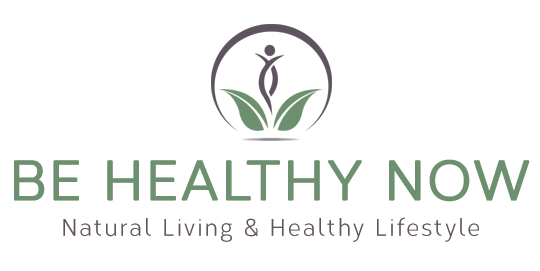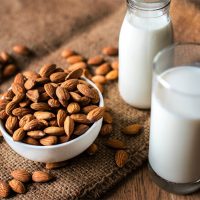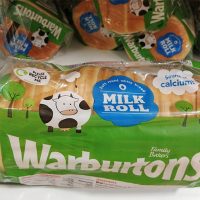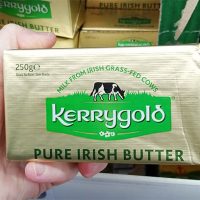
One of the game-changing dairy brands on the UK market has been Cravendale milk by Arla, widely known as the famous ‘filtered milk’.
But what does ‘filtered’ really mean, is it bad, and does the process compromise the benefits of milk composition?
Is Cravendale good for you or in any way better than normal milk?
Read on to find out just what it is that makes Cravendale so special and whether you should include it in your diet.
What is filtered Cravendale milk?
Arla’s Cravendale line is proudly advertised as ‘filtered’, meaning that it goes through a special process of preservation.
Before the raw Cravendale milk is conventionally pasteurised (high-temperature treatment in short intervals), it is run through a series of fine ceramic filters that separate bacteria, microorganisms and other unwanted particles from milk, making it long-lasting and safer for human consumption.
Cravendale comes in 3 variants: whole milk, skimmed, and semi-skimmed milk, depending on the fat content you want from your white goodness.
What is so special about Cravendale milk?
Most milk goes through a standard pasteurization process but some milk brands use ultra-high-temperature processing, meaning the liquid goes through ultra-high-temperature treatment (hence the name UHT milk) of not lower than 135 °C and is kept in sterilized containers. This type of milk has a longer shelf life and you can keep it at room temperature for a whopping few months before opening and still have it good for use.
That said, research warns that this high-temperature treatment not only kills off the unwanted microorganisms but also diminishes the milk quality and its vitamin/mineral content such as certain proteins and possibly vitamin B.
What makes Cravendale milk top-notch is not only the sustainable cow farming on British grass fields but also the unique process of milk microfiltration that doesn’t require more than conventional pasteurisation (falls under ‘Extended Shelf Life’ products).
Although Cravendale will last up to 3 weeks before opening, all whey proteins, vitamins, and minerals are where they need to be without artificial preservatives, additives, or hormones.
This technology preserves the milk’s taste, freshness, and nutritional value without compromising the safety of consumption.
Cravendale vs normal milk
The microfiltration process that Arla uses for their Cravendale milk is finely designed not to break down the milk components and it retains all the necessary nutrients that you need for a healthy dairy intake.
Here is a brief nutritional comparison of full-fat Crevendale milk and Sainsbury’s British Whole Milk for a 100ml serving.
| Typical values Per 100 ml | Cravendale | Normal milk (full-fat) |
| Energy | 65 kcal | 66 kcal |
| Fat | 3.6g | 3.7g |
| – of which Saturates | 2.3g | 2.4g |
| Carbohydrate | 4.7g | 4.7g |
| – of which sugars | 4.7g | 4.7g |
| Protein | 3.4g | 3.5g |
| Salt | 0.1g | 0.11g |
| Calcium | 122mg | 124mg |
The striking similarities in fat content, calories, salt, calcium, protein, and carbs show that Cravendale milk has practically the same values as regular milk brands on the market. That said, filtered milk like Cravendale will provide prolonged ‘freshness’ and preserved nutritional potency as the filtration process eliminates most of the lactic acid bacteria that eventually turn the milk rancid. Simply put, you may make full use of your Cravendale milk longer than regular whole milk.
Is Cravendale milk fortified?
Some consumers question the microfiltration process, suspecting that the milk needs additives in form of minerals and vitamins like calcium and vitamin B, iodine, etc. to compensate for the possible deficiency.
Filtered Cravendale milk is still the same raw cow milk but without hazardous microorganisms. This means it doesn’t change its regular composition and is in no way fortified because there is no need for it.
Is Cravendale milk better than normal milk?
Looking at the nutritional values of Cravendale milk vs normal milk, Cravendale doesn’t bring anything healthier or better to the table, however, if we look further than the nutrients, it’s how the milk production is handled from beginning till the end that makes the difference.
Many dairy companies come from dubious farms with cows of questionable origin and treatment. Arla farms are sustainable, with cow welfare in mind and their optimal nutrition.
If we take the origin into consideration, Cravendale is obtained from healthy cows that produce rich, nutrient-packed milk without the fear of hormones, puss, and other byproducts in milk that are a consequence of cow maltreatment and controversial farming practices. For this reason, Cravendale is better than milk coming from farms that are not sustainable and don’t focus on cow welfare.
Is Cravendale milk lactose-free?
Lactose is the natural carbohydrate in milk, i.e. the natural sugar content you find on the ingredient list. Unfortunately, a certain percentage of people suffer from lactose intolerance, meaning they lack the digestive enzyme lactase that breaks down this sugar.
Cravendale full-fat milk contains lactose (natural sugar – 4.7g per 100ml) and is not suitable for lactose intolerant users, but there is a range of lactose-free products from Arla such as Lactofree milk that has a controlled lactose content.
Is Cravendale milk safe in pregnancy?
Since it is free of preservatives, additives, hormones, and any potentially harmful ingredients, there is no reason why Cravendale milk would be more dangerous or questionable for pregnant women than regular cow milk.
That said, keep in mind that cow milk is a common allergen, so to exclude any potential dairy allergies, it’s best to contact your physician about cow milk consumption during pregnancy and strive towards safe and controlled use.
Is Cravendale milk good for babies?
Many nursing mothers opt for Cravendale milk as a safe transition from breast milk to dairy. Due to its prolonged freshness, rich ‘milky’ taste and safe production, Cravendale is a favourite among toddlers that are switching to cow’s milk.
Since it’s not UHT treated, Cravendale is a less radical transition from mother’s milk to animal dairy than other conventional brands.
Conclusion: Is Cravendale good or bad for you?
Compared to other brands, Cravendale milk provides not only nutrient richness but also reputable farming practices that promise ‘clean’ milk origin and quality.
On the other hand, the fact that it isn’t organically farmed deprives it of potential richness in omega-3 fatty acids, certain antioxidants and CLA (conjugated linoleic acid), although studies show that there isn’t concrete proof that organic means richer in this sense.
All in all, Cravendale is a great option for avid milk consumers, it’s safe for babies and during pregnancy and is a great representative of high-quality milk.



